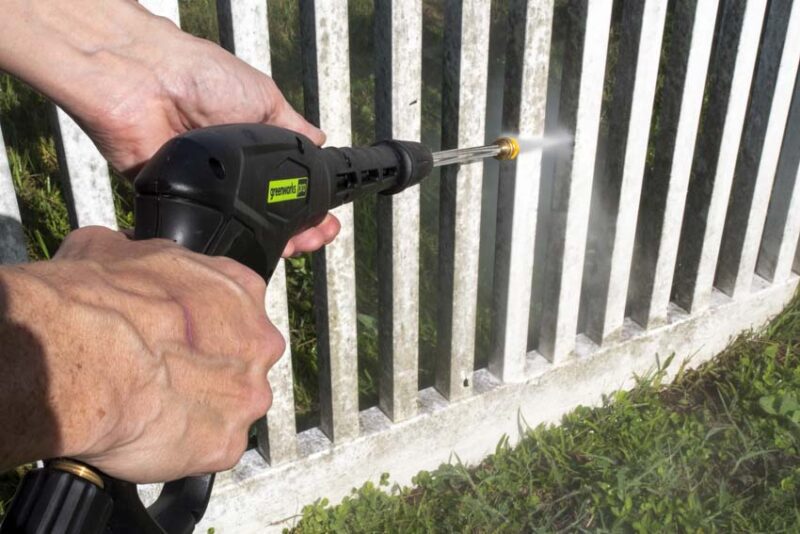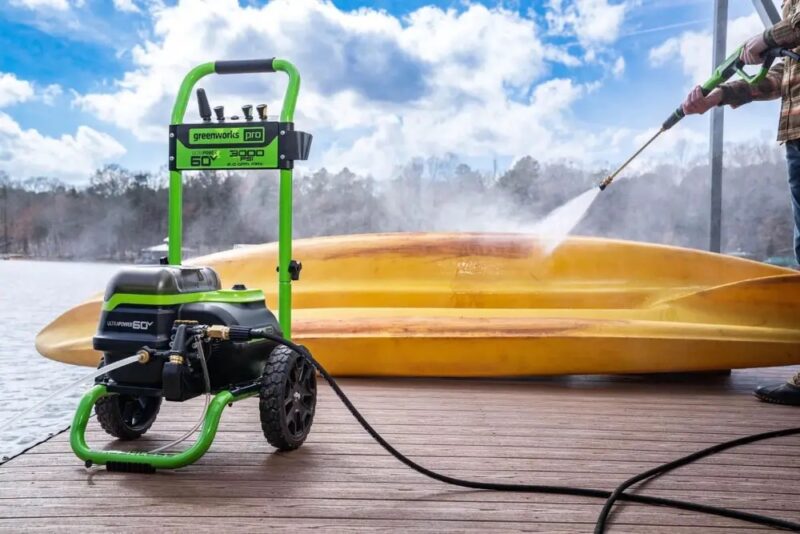When you’re shopping for a pressure washer, knowing how much cleaning power you need is key. It also determines if you can go with an electric unit or need to move up to gas power. But as you consider pressure washer PSI vs GPM, what’s more important?
In this article, I’ll help you understand the role of both and show you a quick way to compare pressure washer ratings.
Understanding Pressure Washer PSI

PSI, or pounds per square inch, is the number most people are familiar with on a pressure washer. It’s a measure of how much force the water hits with and helps you understand its ability to remove stuck-on debris. Think of it as the removal muscle—the higher the PSI, the better it can get dirt, gunk, or even paint to come off a surface.
As you might guess, the higher the PSI, the more power the water has, so bigger is better in many cases. However, too much pressure can be a bad thing. It’s possible to start stripping paint from vehicles, tearing wood away from deck boards, and other types of damage with even moderate power.
You can balance the water’s impact by changing the nozzle. The wider the angle, the lower the PSI. Some pressure washers have a knob on the pump that can let you dial back the power and newer cordless models have multiple power modes.
Learn more about choosing the right pressure washer nozzle.
Understanding Pressure Washer GPM

GPM stands for “gallons per minute” and is a measure of how much water flow a pressure washer delivers. The higher the GPM, the faster a pressure washer cleans.
Think of it like cleaning shower tile with a toothbrush. It’s effective, but slow. If you use a 4-inch brush with the same amount of pressure on each bristle, you have more of them working, so it’s cleaning faster.
It’s similar with higher GPM rates. With two pressure washers producing the same PSI, cleaning is faster with the one that has higher GPM because there’s more water hitting the surface, increasing the amount of work it’s doing.
Unlike PSI, too much water flow by itself doesn’t increase your risk of damage. However, if your PSI is at a level that causes damage, higher GPM will cause more damage than a lower water volume level.
When it comes to nozzle selection, GPM increases as PSI decreases. When you use a wider nozzle, you’re getting more water flow and less water pressure.
Pressure Washer PSI vs GPM
Realistically, it’s the combination of PSI and GPM that gets the job done. The winner of a PSI vs GPM face-off would depend on the job you’re doing.
When you’re considering two or more pressure washers in the PSI range you’re looking for and want to know which one is better, consider the Cleaning Units formula. This simple equation multiplies the PSI and GPM together to give you an idea of the total cleaning potential.
Let’s take a look at a few Greenworks pressure washers as an example.
| Greenworks GPW2301 | Greenworks GPW2700 | Greenworks GPW3000 | |
| Max PSI Rating | 2300 PSI | 2700 PSI | 3000 PSI |
| GPM at Max PSI Rating | 1.2 GPM | 1.2 GPM | 1.1 GPM |
| Cleaning Units (CU) | 2300 x 1.2 = 2760 CU | 2700 x 1.2 = 3240 CU | 3000 x 1.1 = 3300 CU |
As you might have expected, the total Cleaning Units increased as the PSI increased. However, the difference in GPM between the GPW2700 and the GPW3000 shows the two are much closer in cleaning power than comparing the PSI alone. With them being so close, it’s an easier choice if you want to save some money by going with the less expensive model.



